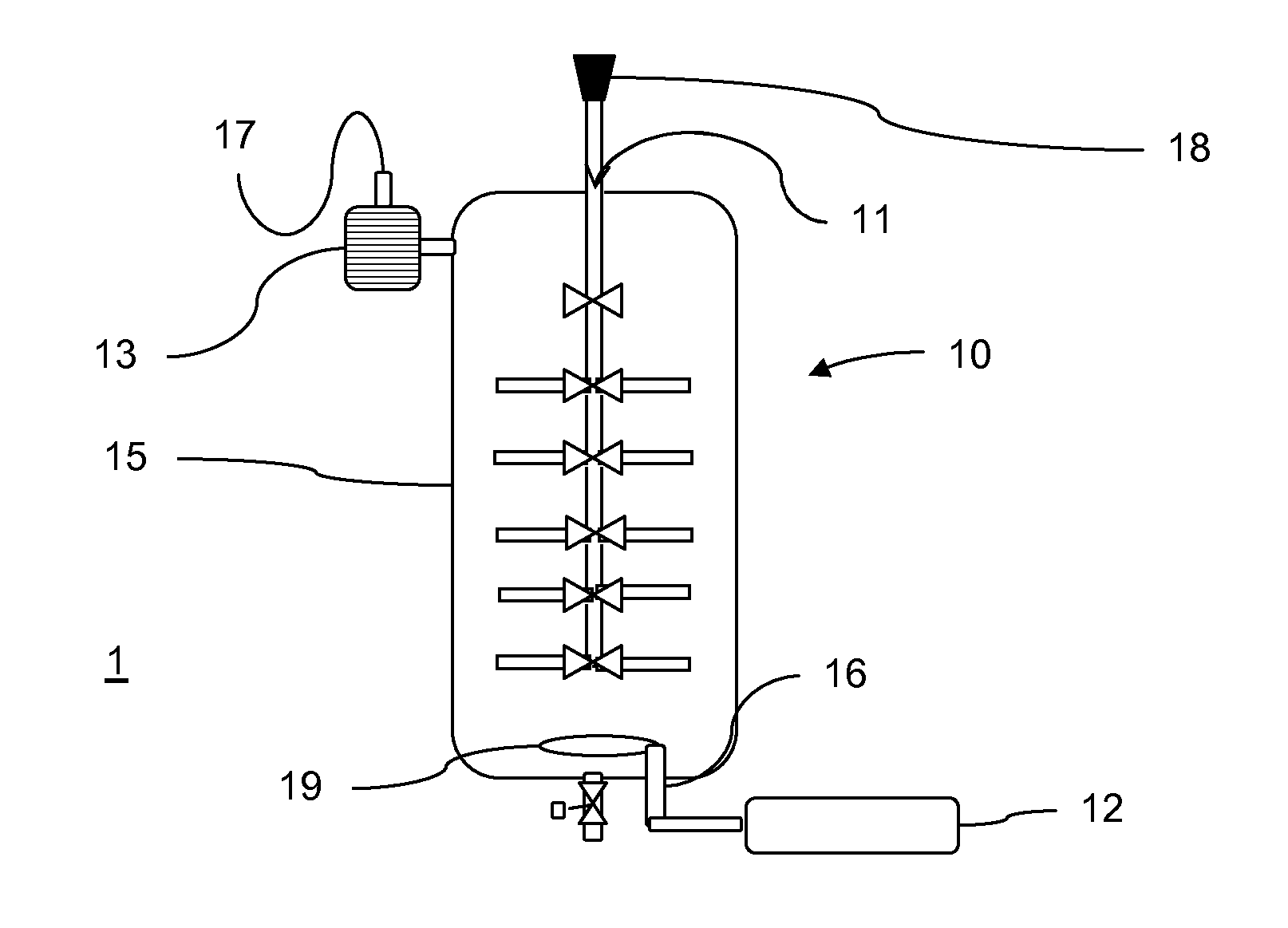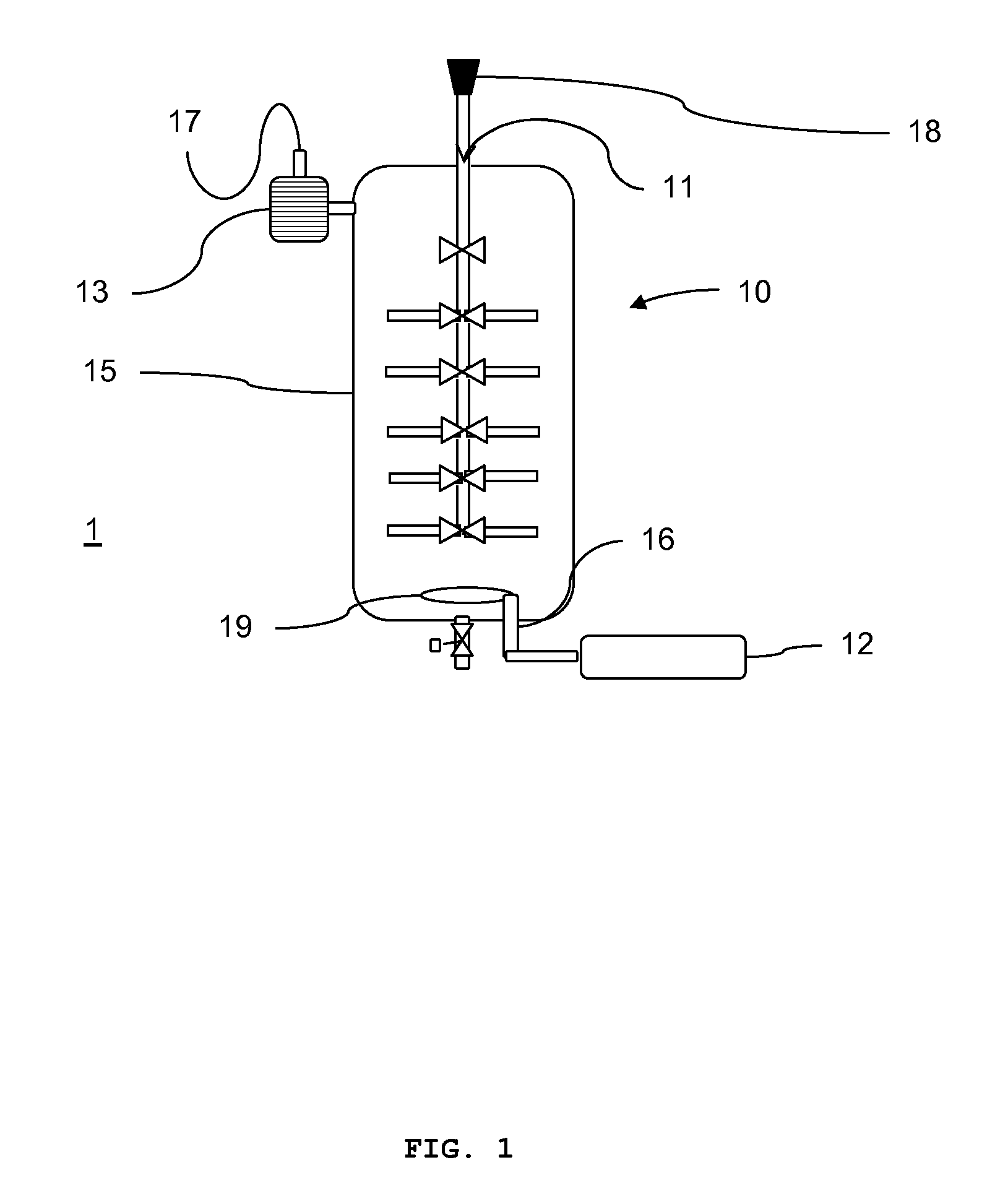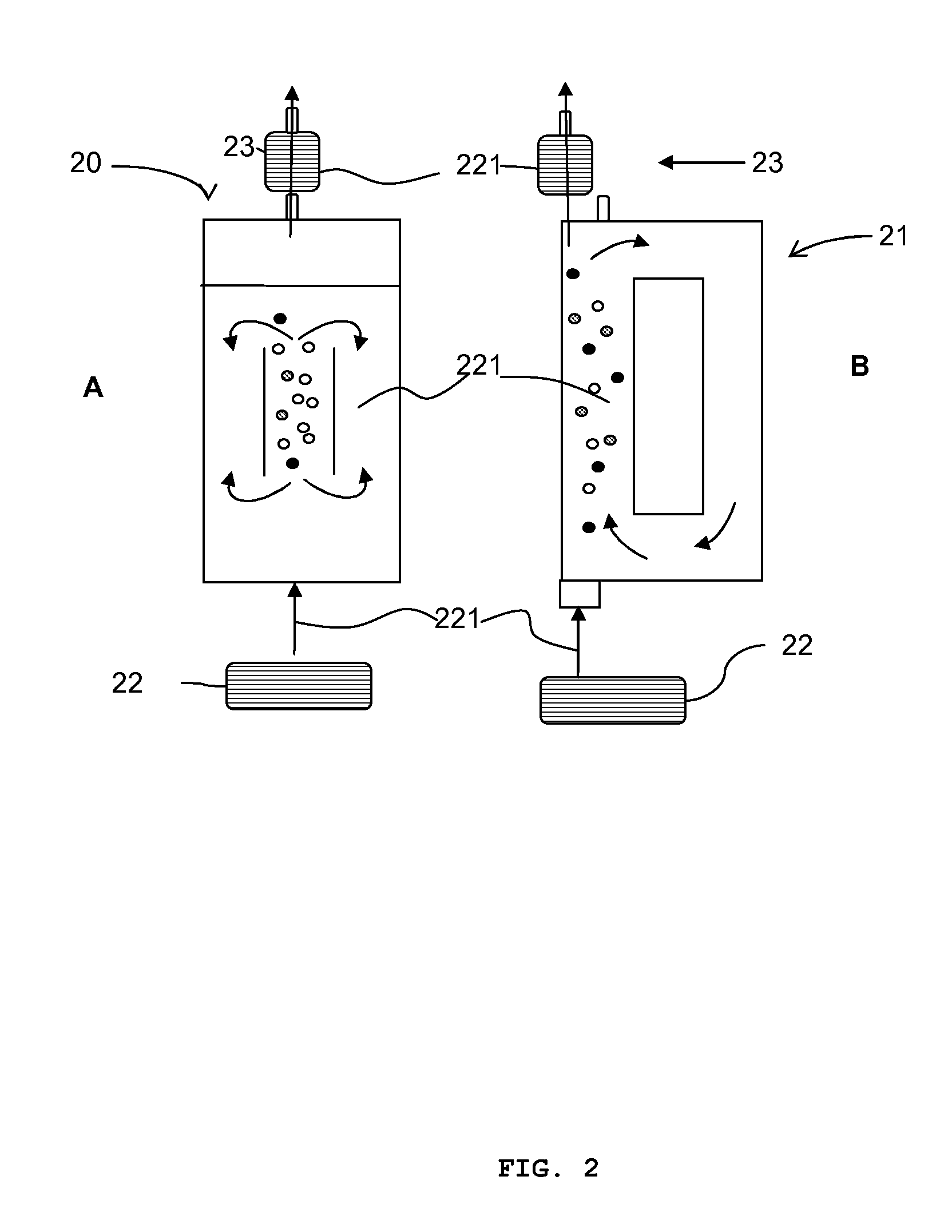Method and apparatus for themicrobiological removal of mercury from contaminated materials,
a technology of mercury removal and microorganisms, applied in the field of materials mercury removal, can solve the problems of high cost of reactants used and alteration of matrix features
- Summary
- Abstract
- Description
- Claims
- Application Information
AI Technical Summary
Benefits of technology
Problems solved by technology
Method used
Image
Examples
example 1
[0066]Mercury removal from a soil contaminated with HgCl2 at a concentration of 100 mg / kg was conducted in slurry phase in a 1-liter volume bioreactor, equipped with a blade stirrer connected to a motor for maintaining slurry homogeneity; stirring was kept constant at 150 rpm in all tests. Air flow, maintained by a pump external to the bioreactor, is inlet by means of a porous septum of dimensions slightly smaller than the bioreactor diameter, positioned on the bottom of the bioreactor itself; Inlet air flow rate was kept constant at 1 L / min.
[0067]Downstream of the bioreactor there were positioned two traps in series, each consisting of 50 mL of 5% H2SO4 and 0.6% KMnO4 solution, in which mercury stripped by the air flow was collected. Traps were periodically replaced and analyzed to determine mercury concentration.
[0068]The test ended at +144 h and percentage of residual mercury in both phases, solid and liquid, was determined. Moreover, percentage of bioavailable mercury was determ...
example 2
[0071]Mercury removal from a soil contaminated with HgCl2 at a concentration of 40 mg / kg was conducted as described in the preceding example. In addition, liquid phase was additioned with a solution of a compound exhibiting biosurfactant action, a rhamnolipid available on the market, at a concentration of 5 g / L. This test yielded a soil mercury removal percentage equal to 47±9%, whereas residue in solid phase at the end of the treatment was equal to 40±9%. The fraction of bioavailable mercury present in the soil, equal to 14.3±1.5% before the treatment, was reduced to 8.6±1.0% at the end of the treatment.
[0072]It is understood that the present description is not to be limited to specific configurations of the apparatus, to specific materials, applications or systems, which of course may vary.
[0073]Moreover, it is understood that the terminology used in the present application, which has been used in order to describe specific embodiments, is not to be understood as limitative.
[0074]...
example 3
[0076]Mercury removal from a soil contaminated with HgCl2 at a concentration of 100 mg / kg was conducted in slurry phase in a 1 liter-volume bioreactor, as described in example 1.
[0077]Microorganism inoculation consisted of a culture of Pseudomonas fluorescens, cultivated overnight on rich medium (tryptone 10%, yeast extract 5%, NaCl 5%) and resuspended in the aqueous phase of the slurry so as to obtain a cell optical density, measured at 600 nm, equal to 1.
[0078]Soil / water ratio was set at 1:10; to the aqueous phase there was added a mixture of mineral medium thus composed: Na2HPO4 7 g / L, KH2PO4 3 g / L, NaCl 0.5 g / L, NH4Cl 1 g / L. Moreover, sodium thioglycolate was added at a concentration of 5 mM, referred to the aqueous phase.
[0079]This test yielded a soil mercury removal percentage equal to 53±18%, whereas the residue in the solid phase at the end of the treatment was equal to 37±17%. The fraction of bioavailable mercury present in the soil, equal to 30.9±9.7% prior to the treatmen...
PUM
| Property | Measurement | Unit |
|---|---|---|
| volume | aaaaa | aaaaa |
| concentration | aaaaa | aaaaa |
| flow rate | aaaaa | aaaaa |
Abstract
Description
Claims
Application Information
 Login to View More
Login to View More - R&D
- Intellectual Property
- Life Sciences
- Materials
- Tech Scout
- Unparalleled Data Quality
- Higher Quality Content
- 60% Fewer Hallucinations
Browse by: Latest US Patents, China's latest patents, Technical Efficacy Thesaurus, Application Domain, Technology Topic, Popular Technical Reports.
© 2025 PatSnap. All rights reserved.Legal|Privacy policy|Modern Slavery Act Transparency Statement|Sitemap|About US| Contact US: help@patsnap.com



